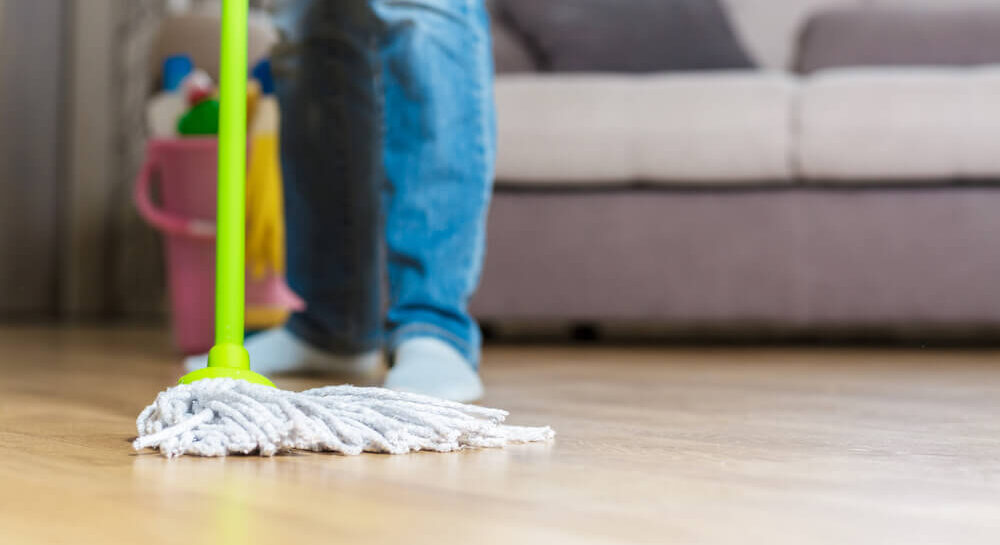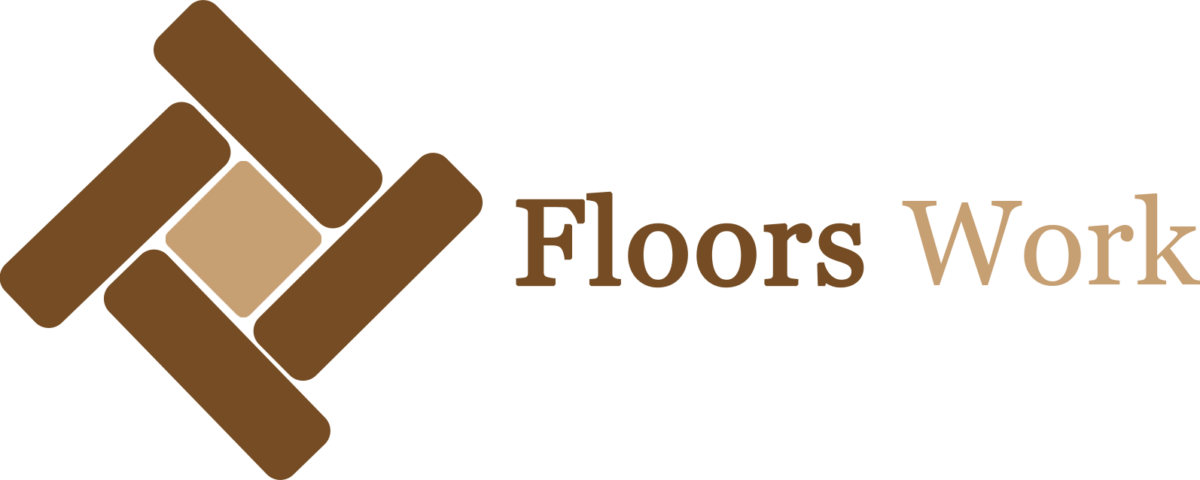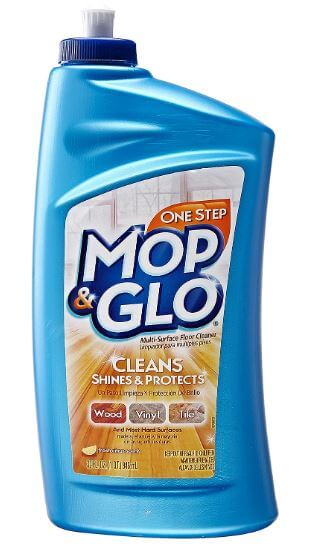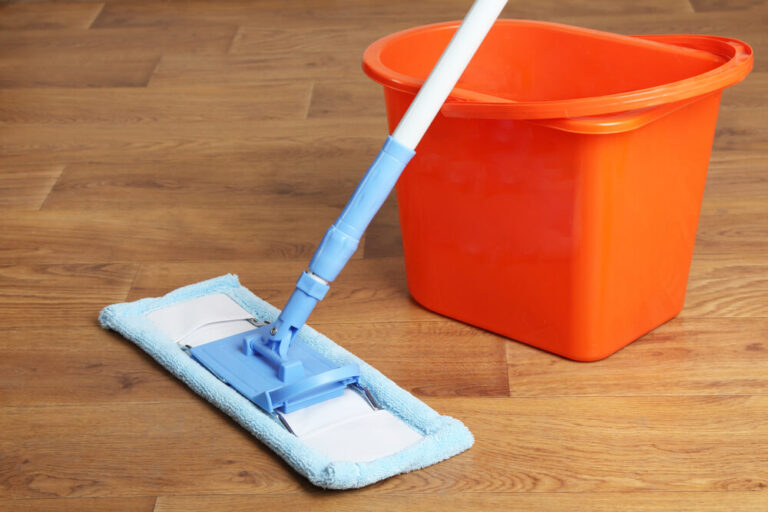
Hardwood floors require specific care to retain their beauty. While mopping is crucial, figuring out its frequency can be tricky. Therefore, homeowners usually ask us, “How often should you mop hardwood floors?” Worry not, In this article, we will explore the right frequency to mop hardwood floors to keep them clean and well-maintained.
Before delving into mopping schedules, it is essential to understand the nature of hardwood floors. Unlike other flooring materials, such as laminate or vinyl, hardwood is susceptible to damage from excess moisture. Over time, water can seep into the wood, causing warping, swelling, or discoloration. Therefore, it is important to use minimal water when cleaning hardwood floors and to avoid prolonged exposure to moisture.
How Often Should You Mop Hardwood Floors?
Being hardwood flooring experts, we recommend to mop your wooden floors in the following pattern:
- Once every 2-3 weeks: This is a good starting point for most low-traffic areas like bedrooms and offices.
- Weekly: Kitchens, entryways, and high-traffic zones benefit from more frequent mopping.
- Daily: Spot clean spills and messes immediately to prevent stains and grime buildup.
Factors Influencing Mopping Frequency
Foot Traffic
High-traffic areas like entryways, hallways, and living rooms are more prone to dirt, dust, and spills. Consequently, these areas may require more frequent mopping compared to less-trafficked spaces like bedrooms or home offices.
Household Habits
Do you have pets or children? Are shoes typically worn indoors? These factors contribute to the amount of dirt and debris that accumulates on your floors, influencing how often you need to mop.
Type of Finish
The finish of your hardwood floors plays a significant role in determining their cleaning needs. Polyurethane sealed finishes are more resistant to moisture and abrasions, allowing for more frequent mopping, while wax finishes require gentler treatment to avoid damage.
Establishing a Mopping Routine: How Often Should You Mop Your House Floors?
Daily Maintenance
While mopping hardwood floors daily is unnecessary and potentially harmful, daily maintenance is essential. Use a soft-bristled broom or a vacuum with a hardwood floor attachment to remove loose dirt, dust, and debris. This prevents scratches and reduces the frequency of deep cleaning.
Weekly Mopping
In most households, mopping hardwood floors once a week is sufficient for maintaining cleanliness. Use a damp mop or microfiber cloth lightly dampened with water or a hardwood floor cleaner specifically formulated for your floor’s finish. Avoid using excess water, as it can seep into the wood and cause damage.
Spot Cleaning
Accidental spills or stains should be addressed promptly to prevent them from setting into the wood. Use a slightly damp cloth to blot the spill, then dry the area thoroughly. Avoid abrasive cleaners or scrubbing, as they can damage the finish.
Seasonal Considerations
In high-humidity environments or during rainy seasons, it’s essential to be mindful of moisture levels when mopping hardwood floors. Excess humidity can cause wood to swell, leading to buckling or cupping. During these times, reduce the frequency of mopping and ensure proper ventilation in your home.
Signs You’re Over-Mopping: Can You Mop Hardwood Floors Too Much?
While maintaining cleanliness is essential, over-mopping can be detrimental to hardwood floors. Signs that you may be mopping too frequently include:
- Dull or cloudy appearance
- Swelling or warping of floorboards
- Cracking or flaking of the finish
- Squeaking or creaking sounds when walking on the floor
If you notice any of these signs, reduce the frequency of mopping and ensure that you’re using minimal water and gentle cleaning products.
Some Essential Mopping Tips
Sweep/Vacuum Regularly
This removes loose dirt, preventing scratches and reducing the need for frequent mopping.
Choose the Right Mop
Microfiber mops are gentle and effective, while steam mops require caution (avoid excessive heat and moisture). Additionally, also learn how to mop hardwood floors without streaks.
Ditch the Soap Scum
Use a pH-neutral wood floor cleaner diluted in water. Soap residues can leave streaks and damage the finish.
Embrace the Damp Mop
Wring your mop almost dry to avoid saturating the wood. Excess water can warp and stain floors.
Dry Thoroughly
Don’t let puddles linger. Wipe up any excess moisture with a microfiber cloth.
Conclusion
Proper maintenance of hardwood floors, including regular mopping, is essential for preserving their beauty and integrity. By considering factors such as foot traffic, household habits, and the type of finish on your floors, you can establish a mopping routine that keeps your hardwood floors clean without causing damage. Remember to use minimal water, avoid abrasive cleaners, and address spills promptly to ensure the longevity of your hardwood floors for years to come.






